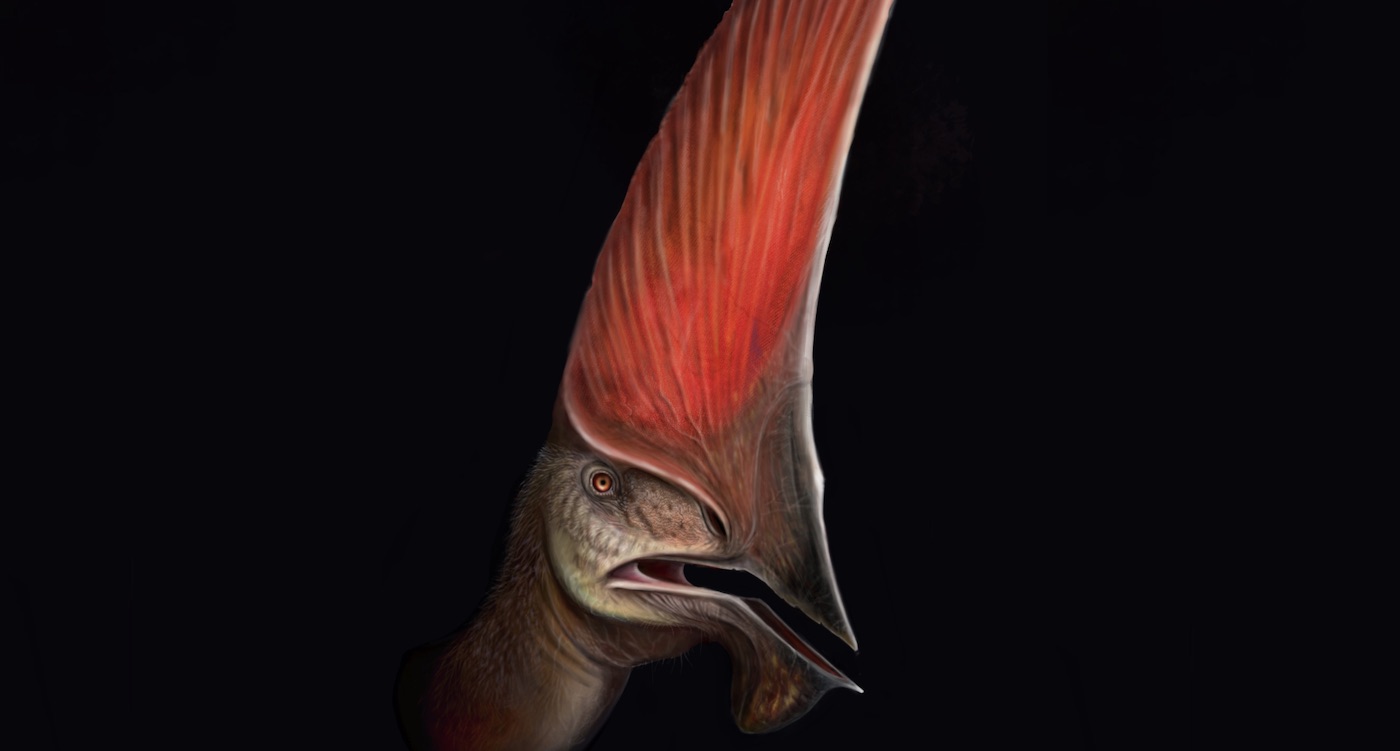A series of smuggled paleontological finds recovered in a 2013 police raid in Santos Harbor, Brazil, contain the most complete crested pterosaur skeleton ever found.
Seized along with 3,000 other fossils destined for the illegal fossil trade, the skeleton opens a new world of understanding about these incredibly charismatic flying animals.
Belonging to the species Tupandactylus navigans, the animal had an enormous head crest that would put a cassowary to shame, and was preserved in limestone from the Early Cretaceous period, around 140 to 100 million years ago.
Having been sawed into six pieces to make it easier to hide, the limestone block containing the skeleton needed to be carefully reassembled, but eight years after being found, Victor Beccari and his colleagues at the University of São Paolo presented in a study a full description of the flying reptile which may actually have been more like a peacock than an eagle.
The head crest was extraordinary, and was preserved along with the skull and the soft hollow bones that normally make pterosaurs a poor candidate for fossilization. Typical of tapejarids, the animal’s group, T. navigans sported a head crest half the size of its body, had a long neck and long legs, but short wings.
Tupandactylus navigans. . Variant 1 .#paleoart #pterosaur #paleontology pic.twitter.com/7KT7dgZVr0
— PaleoLee (@matheusfgadelha) August 25, 2021
In a similar way to when the theory that T-rex was mostly a scavenger irritated an awful lot of schoolchildren in the late ’90s, the scientist from Brazil has a new theory on how the mighty pterosaur spent its days.
MORE: Astonishing Peek Into Travels of Mammoth 17,000 Years Ago: A Diary Written in Their Tusks
“Pterosaurs were already mind-blowing before, but this new specimen, with its huge, awkward crest and long neck, is mind-boggling because—sort of like [flashy] peacock tails—they would have made him an attractive mate, but an easy target for predators and a poor flyer,” Beccari told New Scientist.
“Like the peacock, it probably spent its time eating fruit off the ground or using its long neck to grab food from higher bushes.”
Scans of the nasal cavity showed the animal had adaptations for powered flight, suggesting the animal would only have used its wings in certain circumstances—to escape predators for instance.
RELATED: Researchers Identify a ‘Fearsome Dragon’ With 23-ft Wingspan That Soared Over Australian Outback
YOU Know What to Do; Let Good News Soar by Sharing It…




















